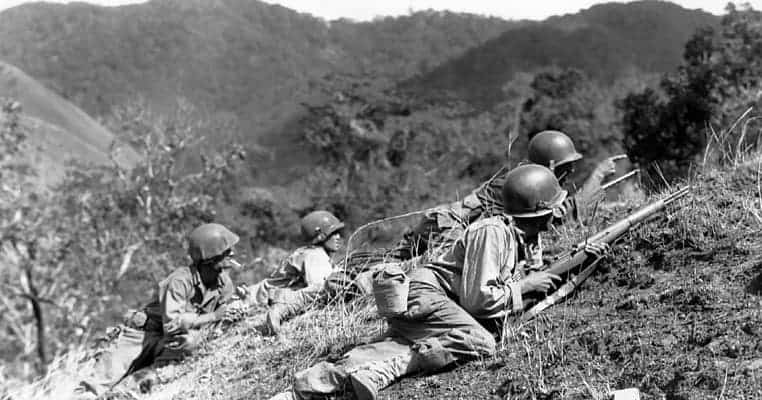It should be no surprise that the deadliest battles fought on American soil came about during the American Civil War, where the battlefields of Gettysburg, Shiloh, Stones River and so many others yielded staggering casualty lists. Antietam remains the single bloodiest day of American history, more than 3,600 Americans were killed in that day’s combat between the armies of the Union and the Confederacy. But the battles of the American Civil War were for the most part limited to a single day of fighting, or two days in instances such as the Battle of Shiloh. Gettysburg was fought over the course of three days in July 1863. During the Civil War the armies disengaged to recover and restore their shattered regiments.

During the First and Second World Wars, once American troops were engaged in combat with the enemy, the fighting remained more or less constant. Following the landing of American troops in northern Europe the United States and its Allies fought their way across Europe in the Battles of Northern France, the Central European Campaign, the Huertgen Forest and the Ardennes campaign known as the Battle of the Bulge. American troops had fought and died there before, in the Meuse-Argonne Offensive in the autumn of 1918, which remains the bloodiest American military campaign in terms of combat deaths in American history.
Here are the bloodiest battles, as measured by the grim count of dead American soldiers, sailors, airmen and Marines, in United States history.

18. The Battle of Saint-Mihiel, France, 1918
When the American Expeditionary Forces arrived in France it was the desire of the French to insert American units into the lines piecemeal, reinforcing the exhausted French units with the Americans serving under French commanders. American General John J. Pershing rejected that notion, insisting that the American troops remained a separate cohesive unit under his direct command. In September, 1918, the Americans, though equipped with French tanks and heavy weapons and its air wing flying mostly French aircraft, entered into action against the Germans at the Saint-Mihiel salient, as part of an overall attempt to break through the German lines and capture the railroad crossroads at Metz. From Metz the Americans would be able to start offensive operations in Germany. The action was the first American offensive action of the First World War.
On September 12 the American assault on the German positions began, after several weeks of extensive logistics preparations. When the assault was halted by Pershing three days later the Americans had achieved all of their objectives, delivering a defeat to the Germans and gaining the respect of the British and French allies. But it came at a heavy price. 4,500 Americans were killed in the battle, compared to about 2,000 Germans, who withdrew in the face of the American attacks. About fifteen thousand Germans were taken prisoner during the battle, due to the rapidity of the American advance. Colonel George S. Patton and an artillery captain from Missouri named Harry Truman both distinguished themselves during the battle, which was to be followed by the even bloodier Meuse-Argonne campaign later that same month.

